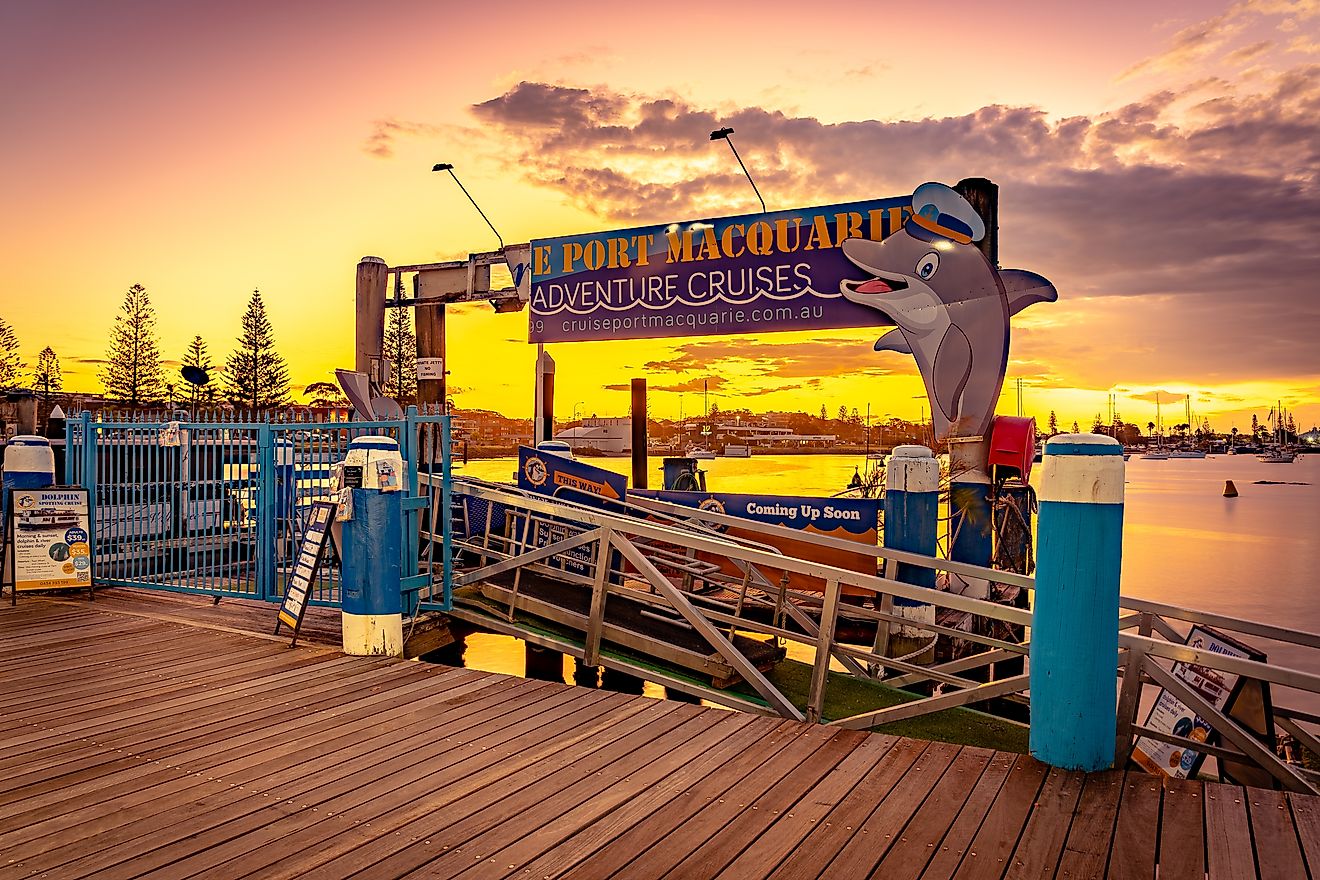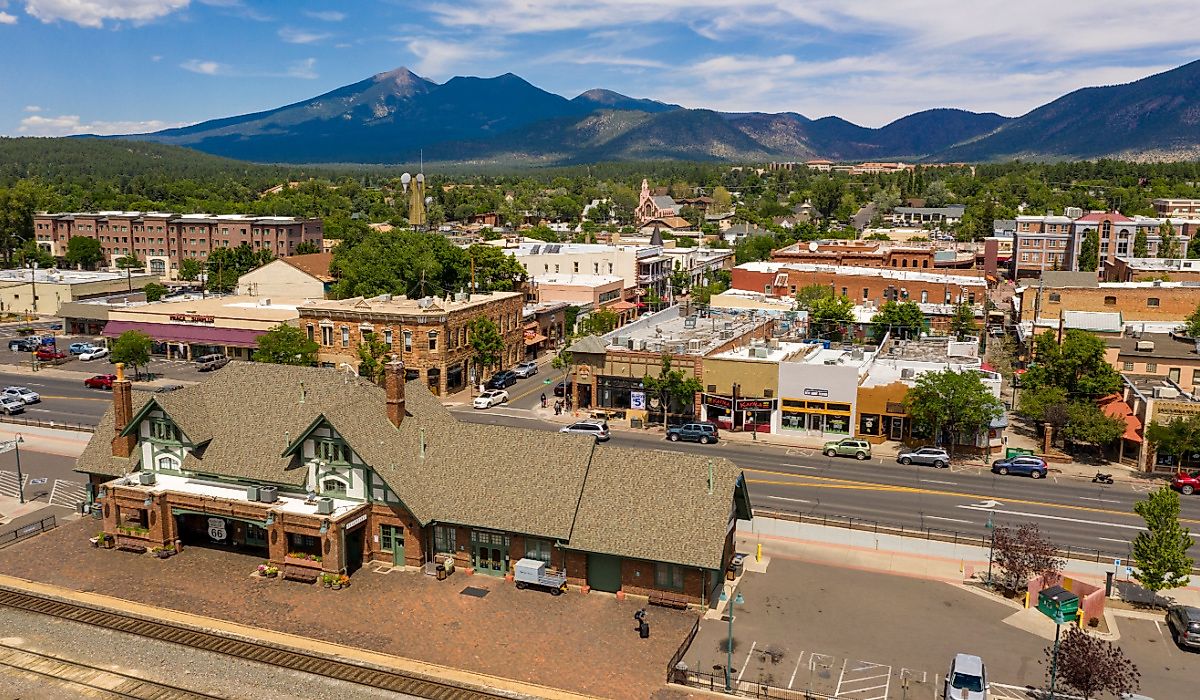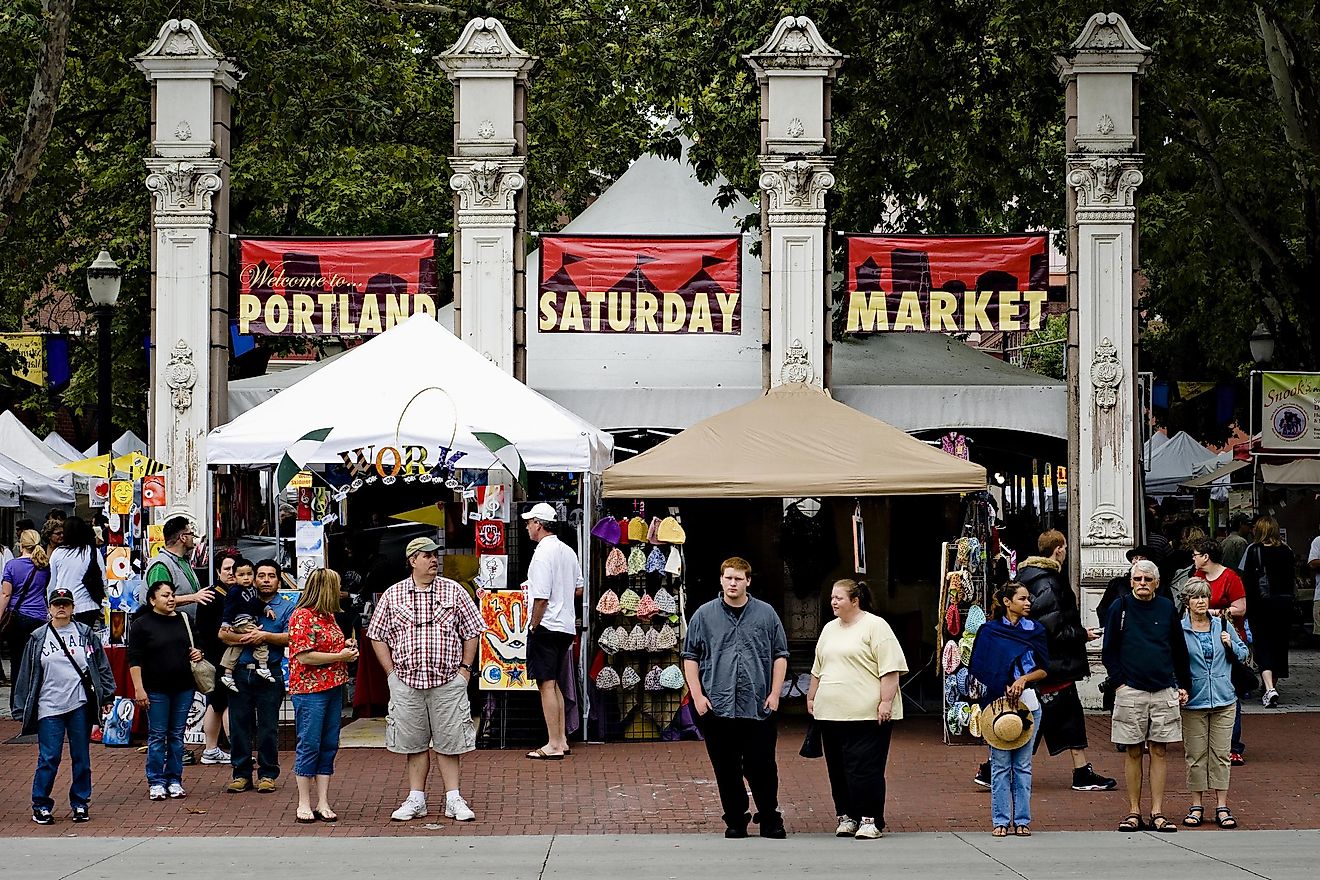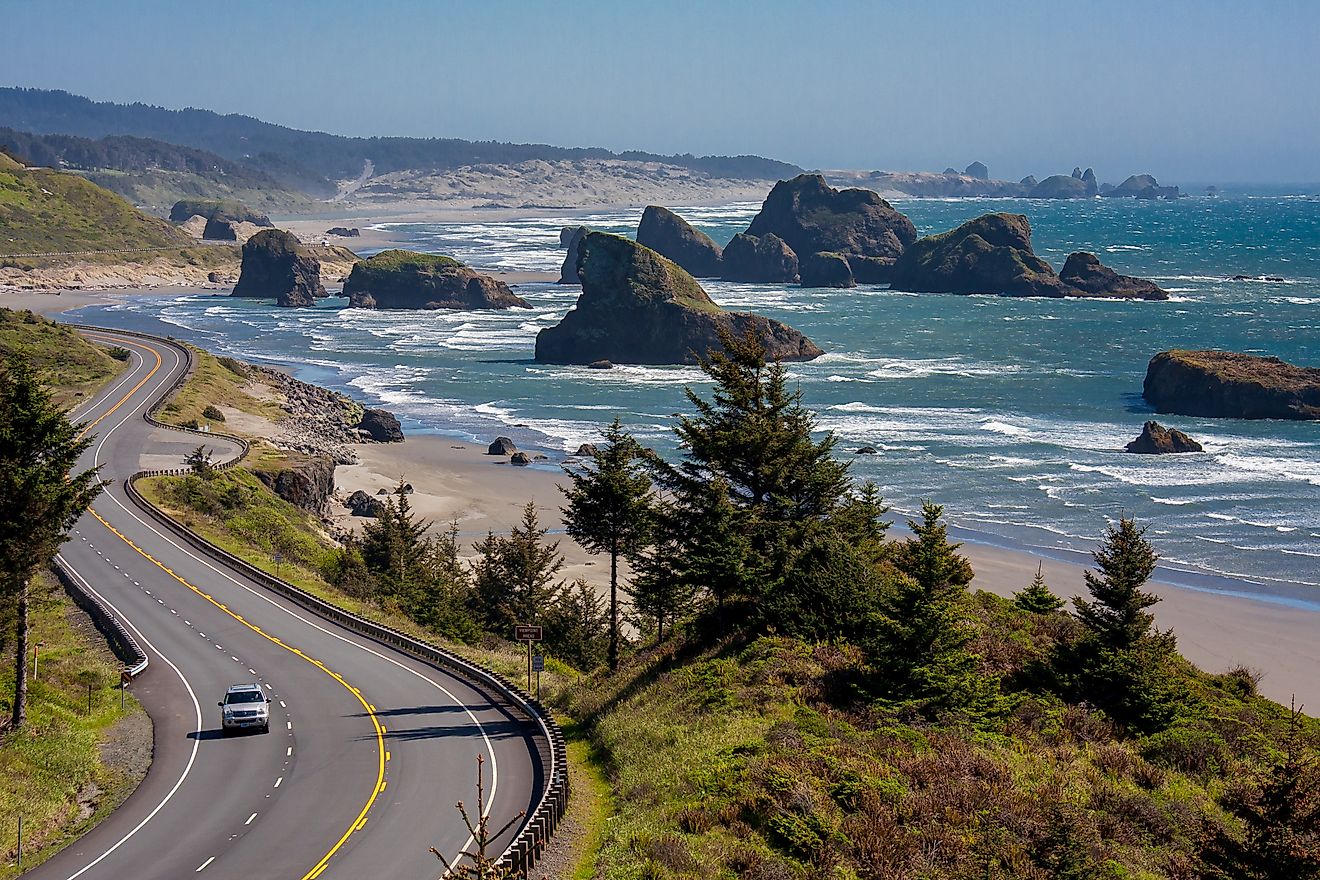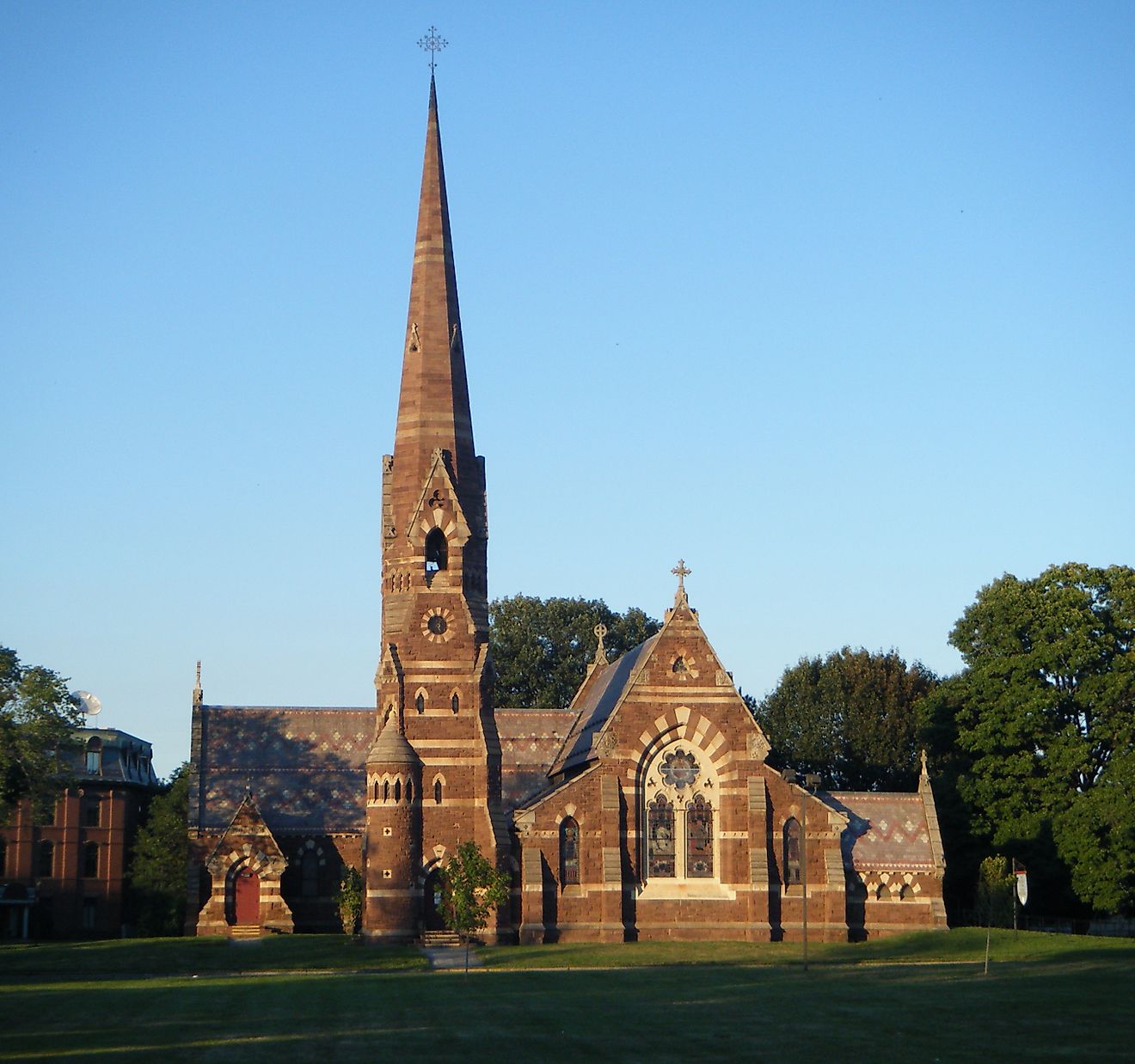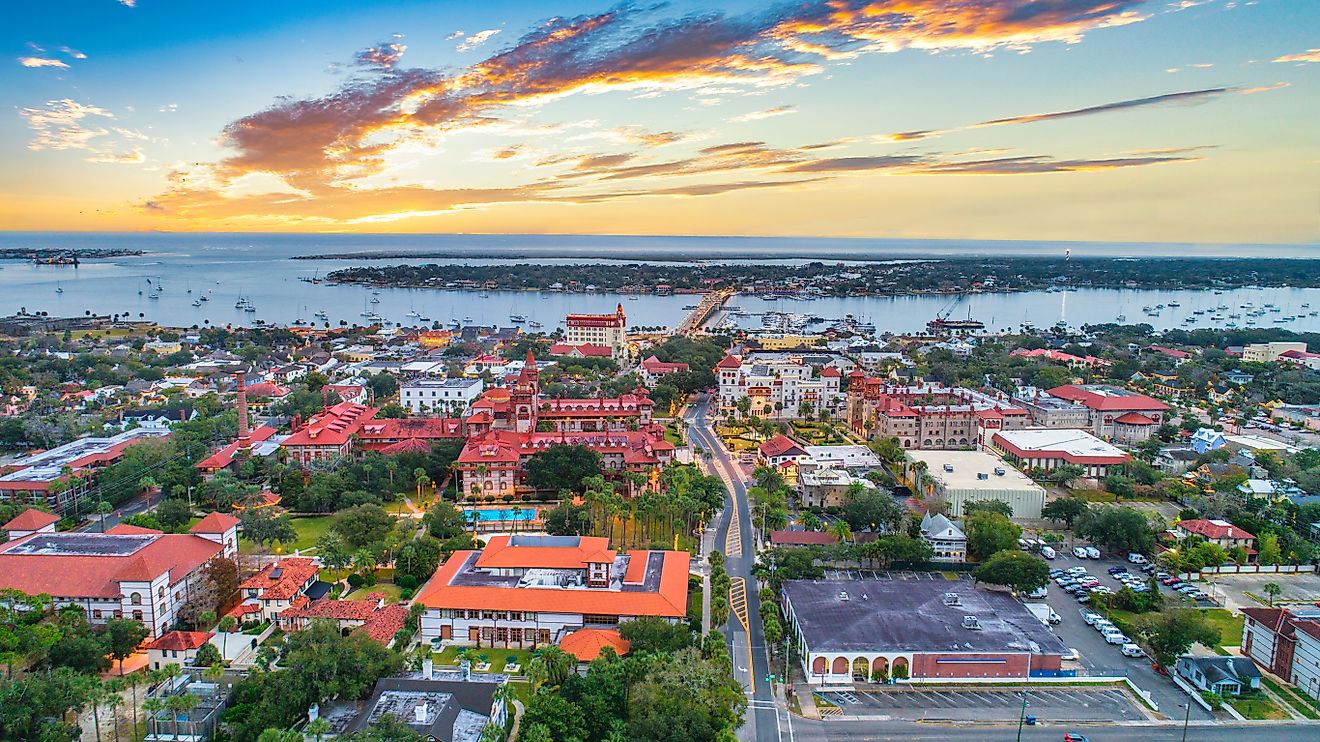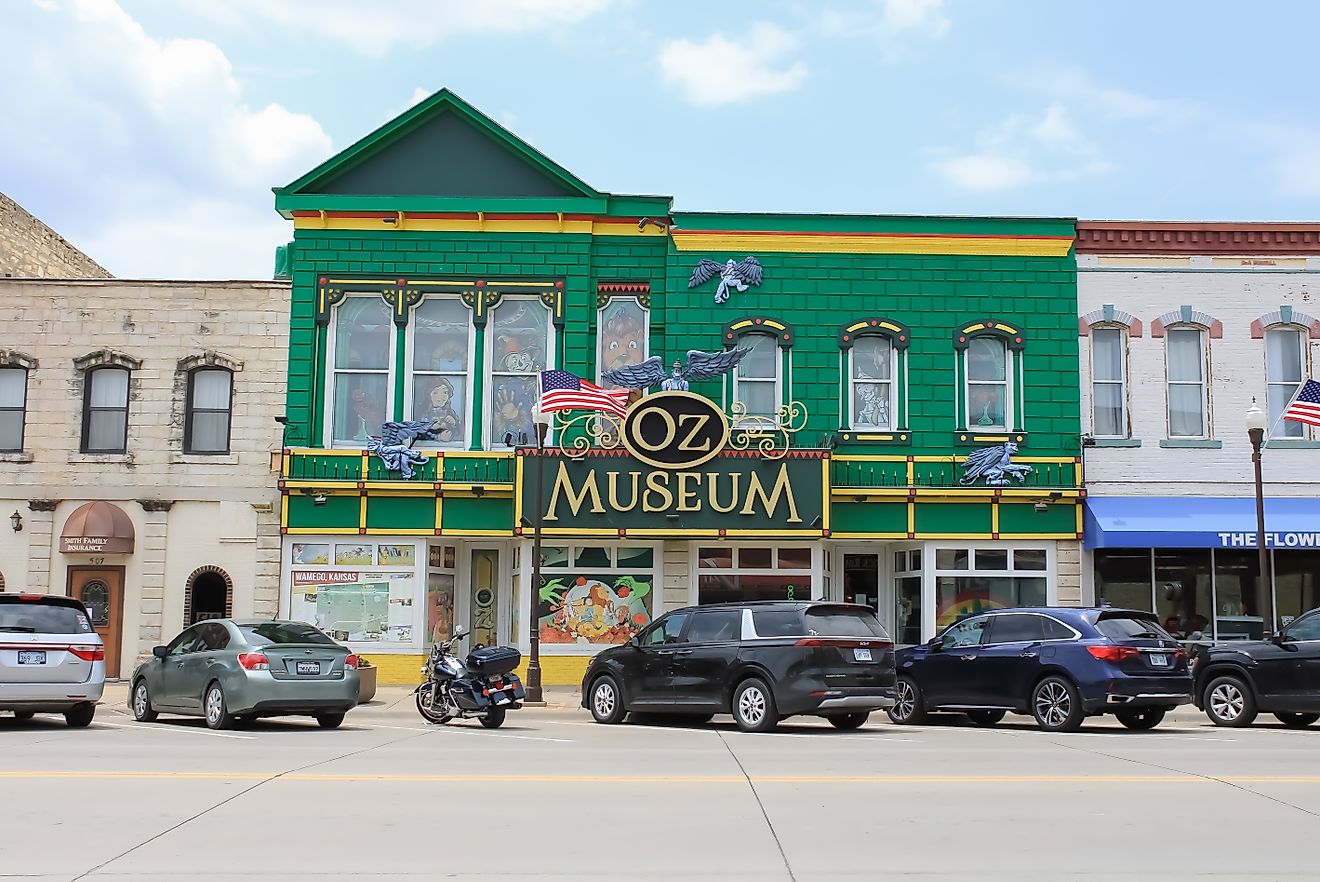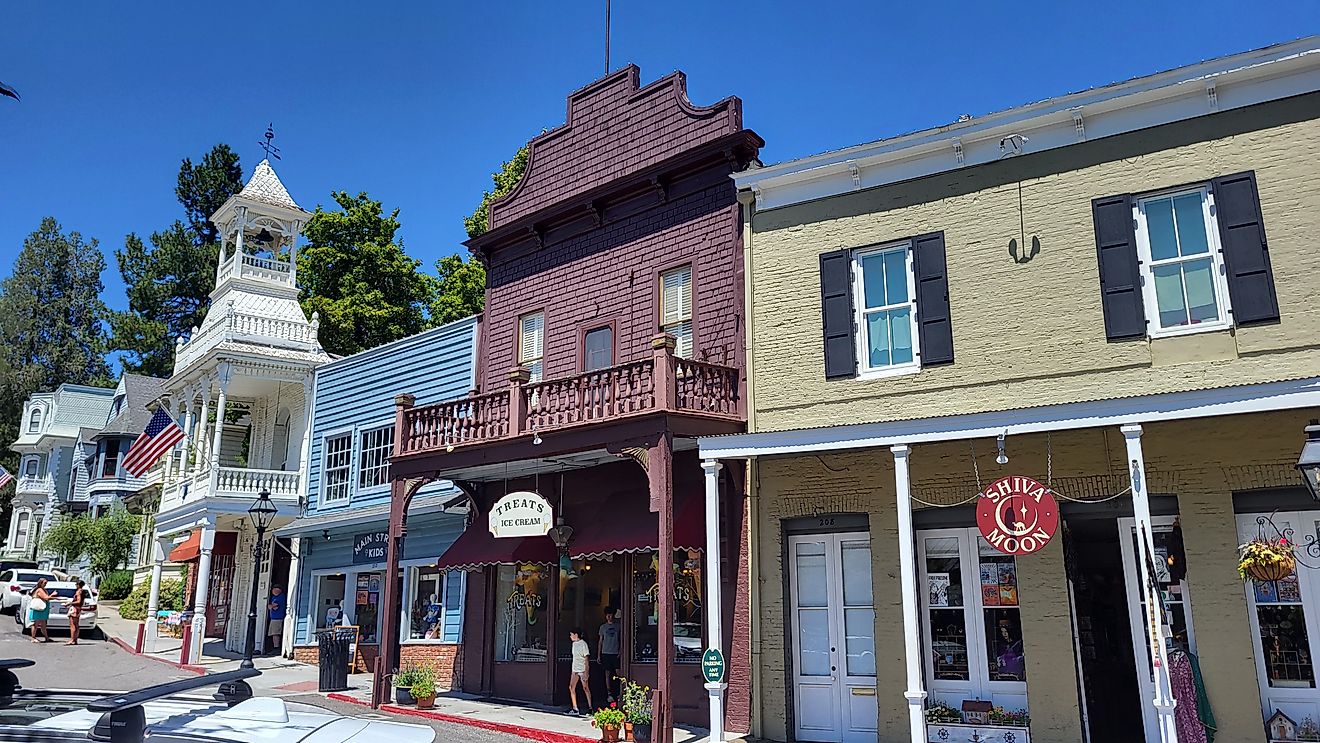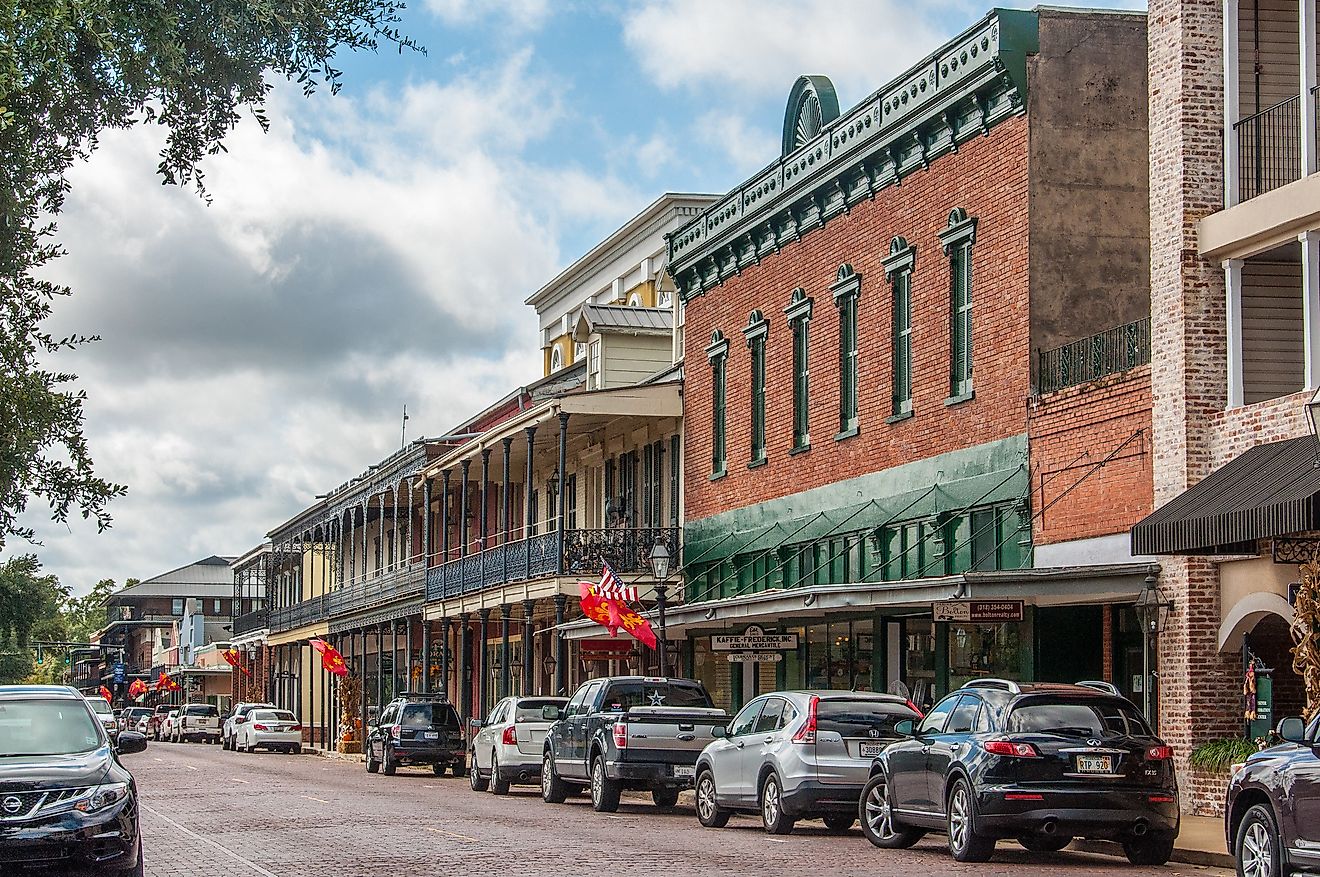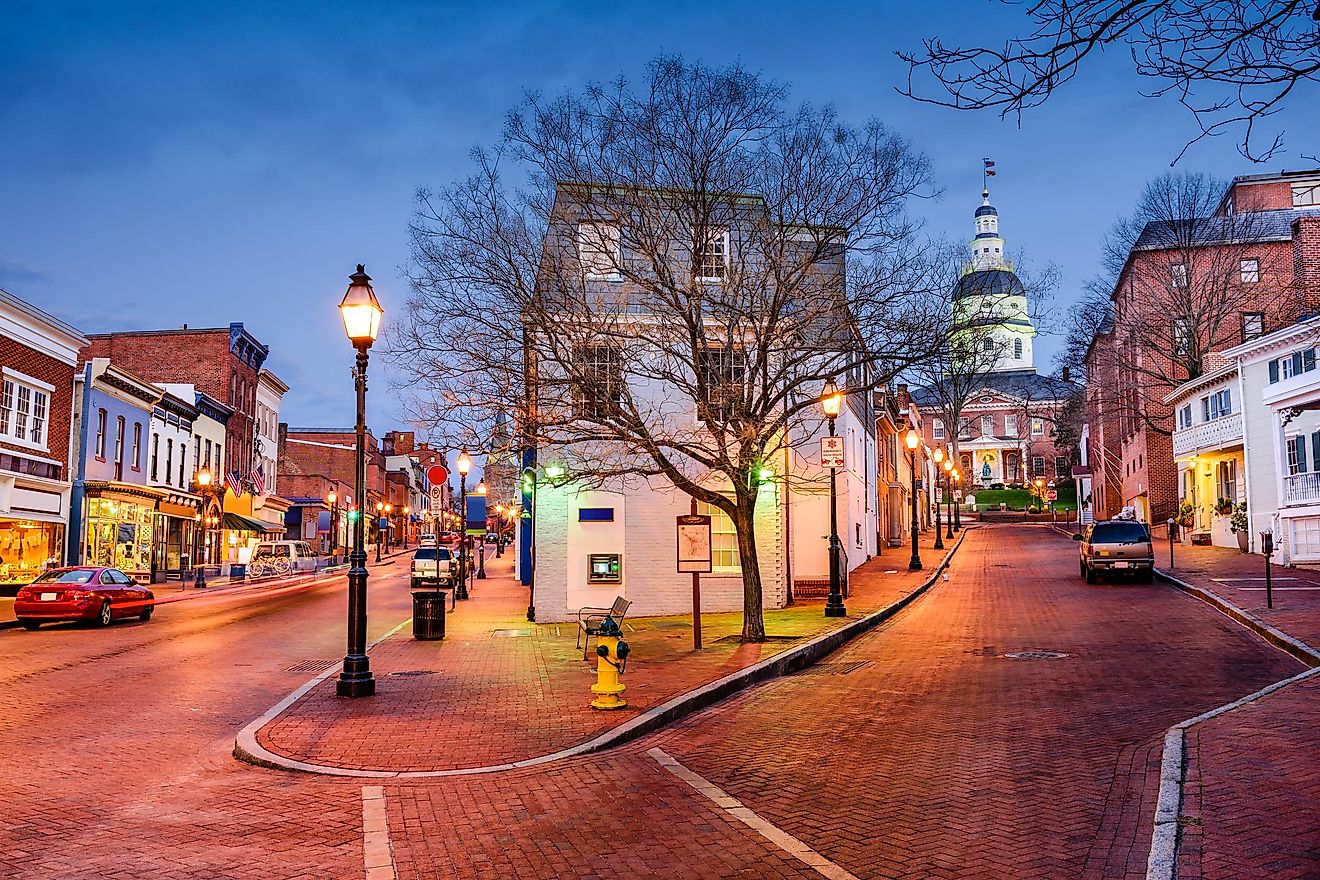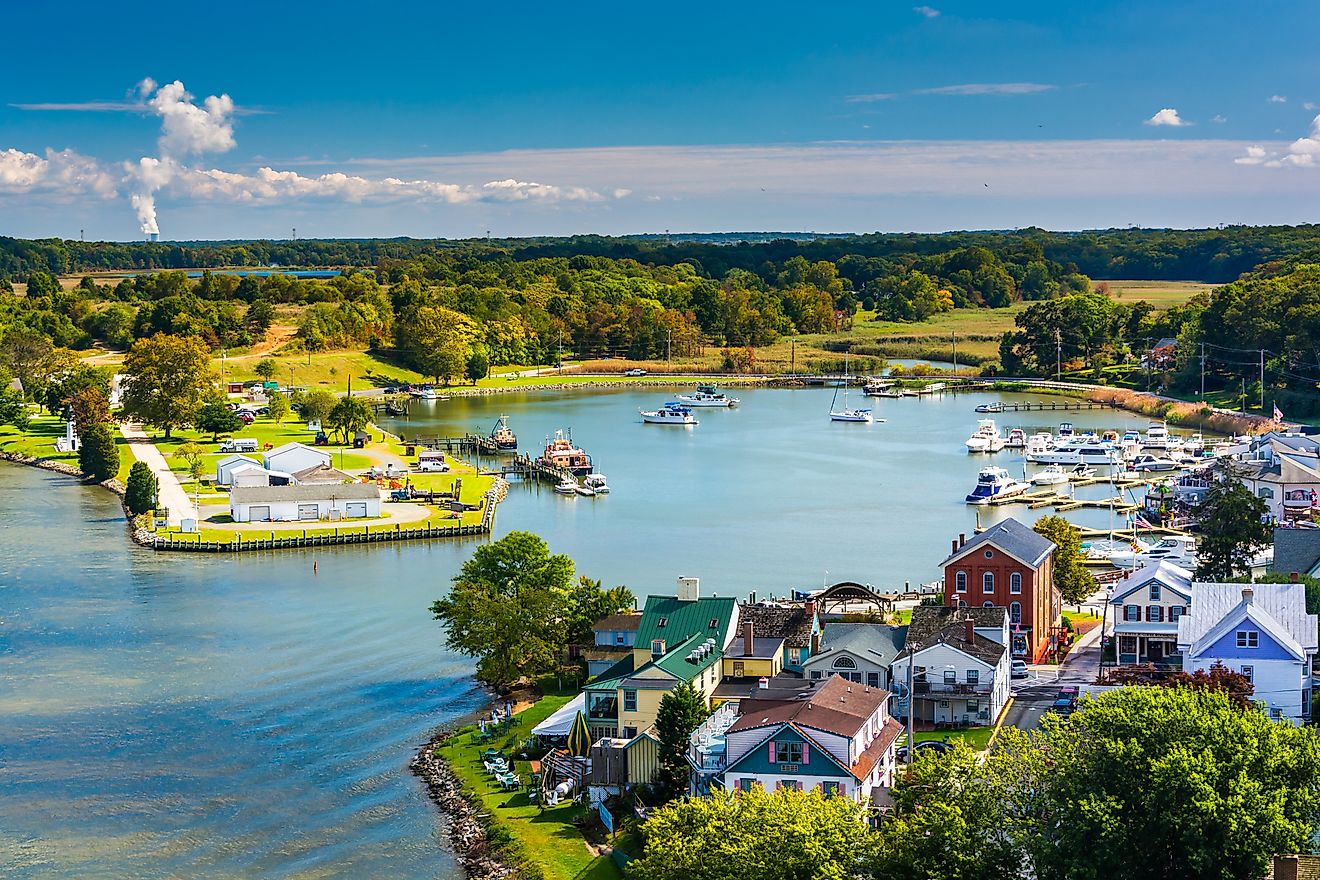
8 Must-See Historic Towns on Florida's Emerald Coast
The Emerald Coast is a beautiful coastal area along the Gulf of Mexico, known for its green waters and soft white beaches.
It covers long parts of the Florida shoreline, providing a peaceful escape with loads of chances for water activities, fishing, and experiencing the historic culture nearby.
The region’s history is rich with tales of Spanish explorers in the 16th century, piracy in the 17th and 18th centuries, and strategic significance during the Civil War.
After World War II, this once peaceful place grew rapidly thanks to new roads and development. It was not long before it turned into a famous spot for vacationers.
With so many places to see, start by learning about these must-see historic towns on Florida's Emerald Coast.
Pensacola
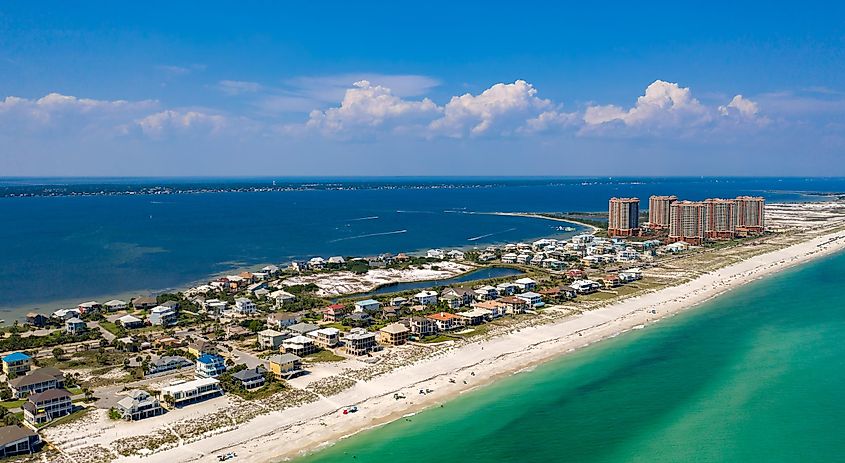
Aerial view of Pensacola Beach coastline, Florida.
Pensacola has definitely seen a lot of changes over time.
It has been ruled by five different governments, giving the town the nickname "The City of Five Flags."
Right in the middle of this beach town is the Historic Pensacola Village, with dozens of iconic spots covering over 450 years of American history.
This open-air area is perfect for strolling through and taking in the town's heritage and legacy, either through visiting one of the many museums or by seeing history play out through various demonstrations. The Pensacola Museum of History and the Children's Museum are just some of the many options to see.
Nearby, the Pensacola Lighthouse offers incredible sights of the Gulf Coast. Maintained immaculately throughout the years, this towering beacon remains a favorite for those in love with history.
Apalachicola
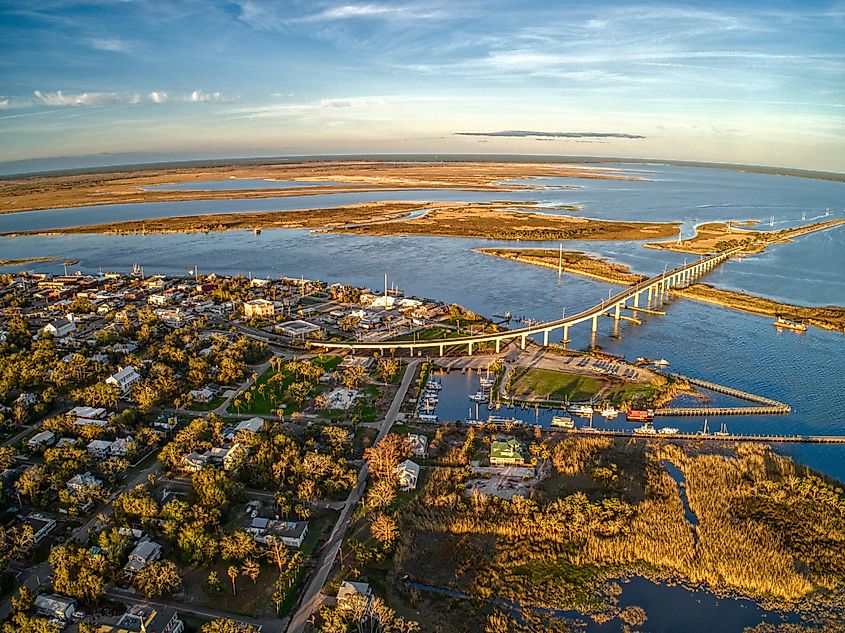
Apalachicola is a small coastal community on the Gulf of Mexico in Florida's Panhandle.
There is a distinct seafood industry legacy in town.
Historically, many oysters served in Florida are sourced near Apalachicola. This spot has provided around 90% of Florida's wild oyster harvest and 10% of the United States' supply. However, environmental stressors and overharvesting pushed the Florida Fish and Wildlife Conservation Commission to shut down oyster harvesting through the end of 2025 to help replenish the population.
In downtown, you can feel a sense of history with aged brick buildings that are proudly preserved and still beautiful.
This includes the Gibson Inn, a rustic wood hotel from Victorian times, and lots of other old-timey shops set up in old brick buildings.
In town, the John Gorrie Museum State Park is dedicated to Dr. John Gorrie, a pioneer from the 1850s who played a big part in creating the cool air and fridge tech we have now.
After checking out the historic spots around town, do not forget to visit the Apalachicola National Estuarine Research Reserve.
The massive space is one of the biggest and richest estuary systems in the U.S. and a critical home to various animals.
Destin
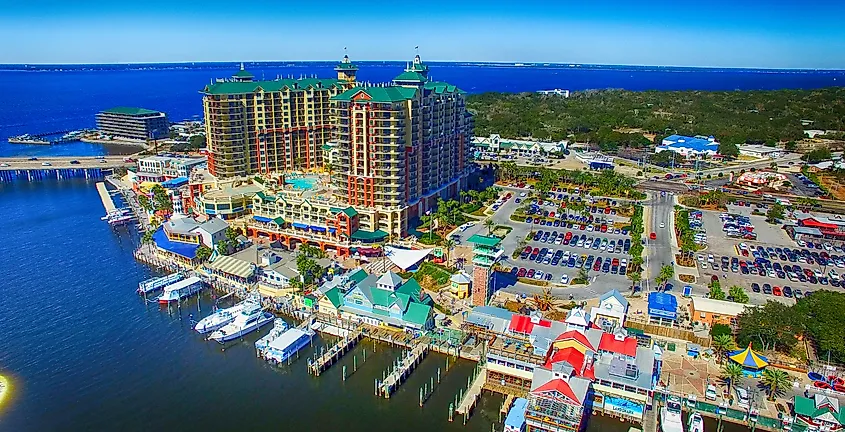
Aerial view of Destin, Florida's beautiful city skyline.
Feel like fishing? Well, welcome to Destin, which is considered one of the luckiest places around to fish.
It started as a fishing town in the 1850s and still has deep ties to ocean life, with many families traditionally making their living by fishing through the years.
The Destin History & Fishing Museum celebrates the story of this area and teaches how Destin grew from a tiny fishing hub into a popular spot for visitors.
The town's harbor sits at the core of the city's fishing scene and boasts the biggest group of charter fishing boats in all of Florida.
Just a short drive outside Destin, you can find the Indian Temple Mound Museum, showing how Native American cultures lived in this area long ago, long before Europeans arrived. The museum and the ancient mound created around 850 AD helped to paint a picture of the region's deep history.
Port St. Joe
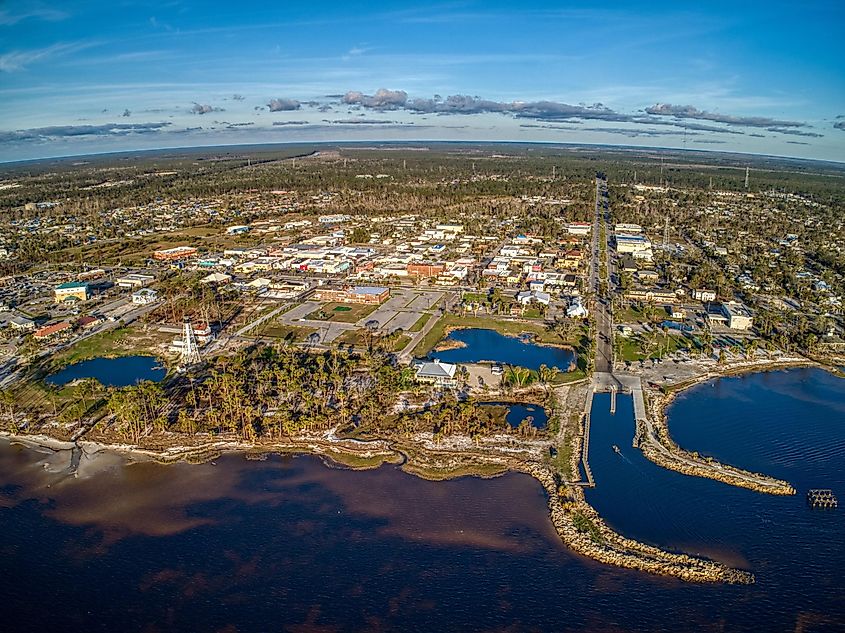
Port St. Joe is a small town in the Florida Panhandle.
Port St. Joe is often called a lost city because of the population plunge during the 19th century, partly because of a Yellow Fever outbreak. But the town rebounded and reinvented itself and now is thriving again.
The town's lively city center has kept much of its historic charm with historical gems like the Art Deco Port Theatre, which first opened its doors in 1938.
To learn about some local history, step into the Constitution Convention Museum State Park. Visitors can explore this park to journey into Florida's past, learning all about how it reached statehood.
If you love animals and the outdoors, St. Joseph Bay Buffer Preserve is the place to see. You can catch amazing sights, like bald eagles soaring through the sky, and it is an excellent spot to watch animals living freely amongst nature.
Panama City
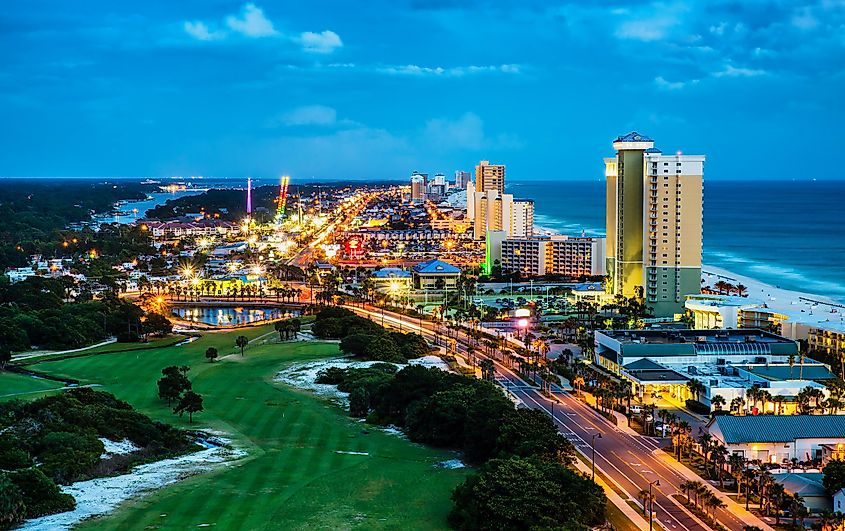
Front Beach Road in Panama City Beach, Florida, during blue hour at night.
Panama City has a thrilling past with pirates and privateers sailing its waters, giving the town an exciting history and background.
During the Civil War, Panama City was a noteworthy location that saw several small battles and attacks at sea. It also had a big operation for making salt set up by the Confederate side, which was very important for feeding the soldiers.
The Historic Downtown Panama City area of town brings the magic of old Florida by the shores of St. Andrews Bay.
Bay County Historical Society Museum is at the heart of this area, offering historical talks and gatherings. It acts as a key spot for keeping and spreading the stories of Bay County and Panama City.
When you are there, make sure to visit St. Andrews State Park. It offers one and a half miles of sandy shores and is an ideal spot for a beach day.
Milton
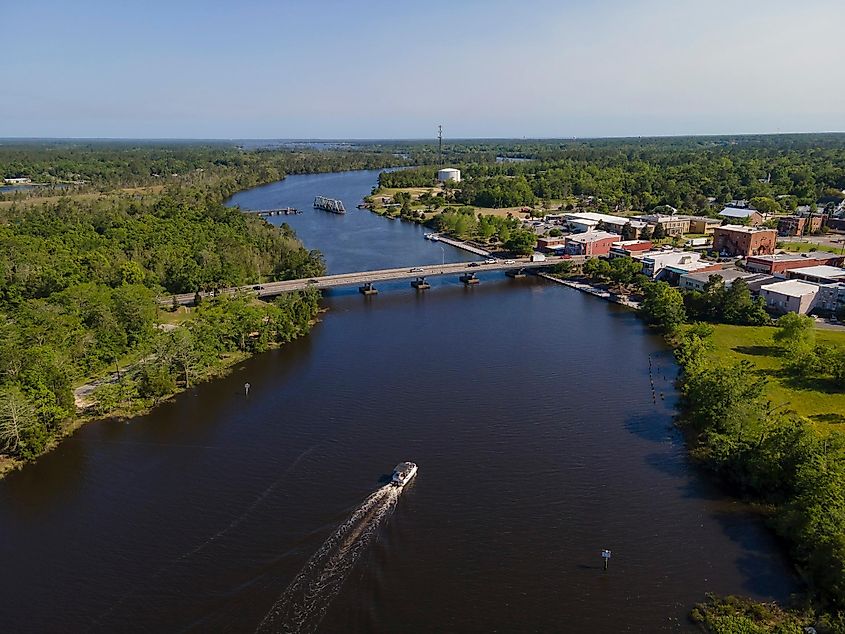
Passenger boat traveling under bridges on a wide river in Milton, Florida.
When you come to Milton, get ready for that "Old Florida" charm.
The town is one of the oldest in Florida, founded back in the early 19th century. During the Civil War, it was an essential site for building Confederate ships and was a blockade-running port.
Milton holds the title of "Canoe Capital of Florida" and is well-loved for its Blackwater River. This river gets its name from its unique dark waters, colored by tannins, and is bordered by white sand beaches.
History lovers should stroll the town's historic district, which takes up several city blocks and is filled with old houses and buildings.
Right in the middle of Milton, the Imogene Theatre stands out as a vital piece of the area's history. Since it was built in 1912, this place has been everything from a cinema to a spot for live shows. Recently, it was bought by a church and will become a place of worship.
Niceville
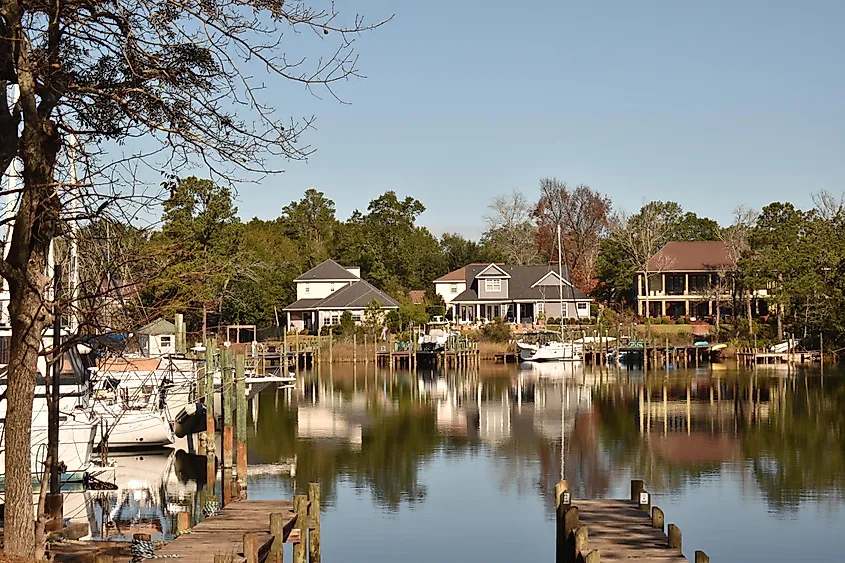
Bluewater Bay Marina in Niceville, Florida.
The tale of Niceville began in the 19th century, known initially as Boggy Bayou. It took many years before it was renamed to what we know today as Niceville. People say this new name was inspired by a local builder named William H. Nice.
Niceville stands out because of its proximity to Eglin Air Force Base, which began in 1935. Eglin AFB is one of the most significant military bases globally and is vital for creating and checking out new military planes and weapons.
During World War 2, the area near Niceville and Eglin Air Force Base was necessary for the war as Eglin AFB was used to train Allied forces.
Henderson Beach State Park is close to Niceville and offers beautiful white sand beaches and clear waters by the Gulf of Mexico.
If you are looking for a great outdoor walk, Turkey Creek Nature Trail is a wonderful spot. This trail has stunning views and features a clear creek with a sandy bottom, perfect for activities like tubing or kayaking.
Seaside
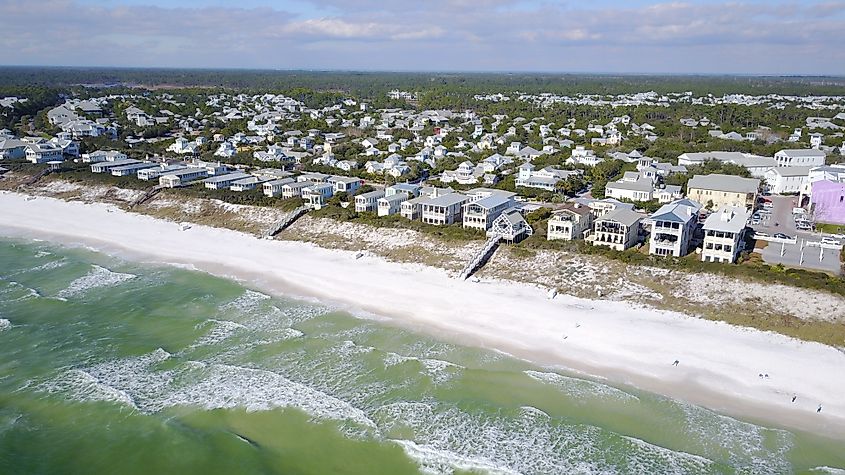
Seaside might not have the most extended history, but it certainly has one of the most unique ones.
The town is considered the first built example of New Urbanism, a movement emphasizing walkable, mixed-use neighborhoods.
Seaside's layout was meticulously planned in the early 1980s by architects Robert Davis and Andrés Duany, and its pastel-colored homes were made semi-famous in the 1998 movie "The Truman Show."
Central Square in town acts as the heart of the community, where people come together for exciting events like local farmers' markets, live music shows, and movie gatherings under the stars.
The town is also famous for its nine beach pavilions. Each sits at the end of a road and acts as a doorway to the beach. These pavilions do more than look good; they help protect the dunes from people walking on them. Plus, they are a feast for the eyes with all their different designs.
Explore the Historical Charm of the Emerald Coast
Travel from Pensacola's old roads to Seaside's calm shores and Port St. Joe's cozy feel.
Every place on this gorgeous coast shows a unique side of Florida's history and, of course, what is special now.
If you love the ocean, history, or lively towns, the Emerald Coast is all about adventure and finding new things to see and do.
So, whether you are up for a swim or want to snap pictures in museums, the Emerald Coast offers something for everyone's interests.
